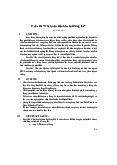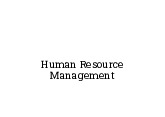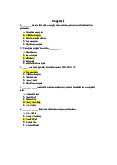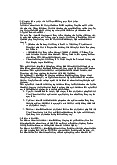



















Preview text:
EUROPEAN EXTERNAL ACTION SERVICE HUMAN RESOURCES REPORT 2021 2 2021 HUMAN RESOURCES REPORT
European External Action Service 3 About this report
This is the annual Human Resources Report of the
European External Action Service (EEAS) for the
year 2021. This report provides an overview of the
main administrative and policy developments as
regards human resources as well as detailed sta-
tistics on the EEAS population.
To access previous reports you can visit the EEAS website. July 2022 4 CONTENTS CONTENTS 5 FOREWORD 6 ORGANISATIONAL DEVELOPMENT 7 Organisation and structure 8 Network of EU delegations 8 Cooperation and synergies 9 TALENT MANAGEMENT 12
Officials and temporary agents 13
Temporary agents from national diplomatic service 15 Contract agents 15 Local agents 16 Seconded national experts 17 Blue book trainees at HQ 17
National experts in professional training 18
Junior professionals in delegations 18 Trainees in delegations 18 Active seniors 19 Exchange programmes 19
Geographical and gender balance 20
Developing and retaining talent 21 Training and development 21
WORKING ENVIRONMENT & EQUAL OPPORTUNITIES 24 Covid-19 25
Gender, diversity and inclusion 28 Gender Parity 28 Anti-harassment policy 30 Mediation 30 Work-life balance 31 Ethics 31 EEAS social policy 32
INFRASTRUCTURE, SECURITY AND INFORMATION SYSTEMS 33 Infrastructure 34 Security 38 Field security 40 Digital solutions 42 EEAS POPULATION 43 EEAS staff by category 44
Distribution of staff by gender 47
Distribution of staff by nationality 51 Distribution of staff by age 57 Management staff 62 ANNEXES 66 Organisation chart 67 List of EU Delegations 68 5 FOREWORD
The year 2021 has been marked by the COVID-19
the EU institutional set-up, and to bring together
pandemic, impacting our professional and person-
the different diplomatic, cooperation, security and
al lives, as well as the domestic and global politics.
intelligence capabilities at the service of the HR/
In addition, conflicts and instability increased in
VP. We continued our close cooperation in terms of
our neighbourhood and around the globe.
human resources and crisis management with the
European Commission, and with Member States
Despite the exceptional circumstances imposed by through the HR Network.
the pandemic, the EEAS maintained its role in being
the interface between Europe and the wider world
We have also worked to bring the EU Delegations
and was able to advance on cooperation, develop-
closer to the decision making process, in the defini- ment, peace and security.
tion of our objectives and goals. In this sense Dele-
gations have been central in the formulation of the
In these challenging times, we ensured a profes-
EEAS mission statement that was finally adopted
sional functioning of the EEAS, business continu- in 2022.
ity, and duty of care towards our staff, no matter
the circumstances: we managed to vaccinate staff
Human Resources are at the core of our action.
against COVID-19 in Headquarters and in Delega-
Staff is our most precious resource. As we face a
tions, even some of the most remote ones. We suc-
difficult year 2022 ahead, with war raging in our
cessfully evacuated our staff, including our Local
neighbourhood, a lingering pandemic, inflation
Agents, from Afghanistan in the aftermath of the
soaring, and with a zero-growth environment in
Taliban’s takeover. We supported Delegation staff
terms of budgetary resources, we must strive to
facing difficult situations in China, in Haiti, in Myan-
focus our resources where the European Union can
mar and in Ethiopia, to name a few.
have most impact and can make a difference.
We continued to work tirelessly on the moderni-
You will find in this report a wealth of information
sation of our procedures and working conditions,
and statistics on the EEAS staff, and on our actions
tackling new challenges as they arose. Due to the
to build an agile, innovative and diverse service. I
profound changes in our working arrangements
hope you will enjoy the reading.
during and following the pandemic, it was also im-
portant to take stock and therefore, have a solid
I would like to express my gratitude to all col-
and statistically sound basis for our decisions, we
leagues who have made 2021 a successful year, in
conducted a general staff survey in the last quarter
spite of the tremendous challenges.
of the year. We also ran, for the first time, and joint-
ly with the Commission, a survey on diversity and
inclusion. The perceptions and ideas expressed in
these surveys find their way into our policy making,
from rules on the “new normal” of office work, tele-
working and decisions related to rights and obliga-
tions of staff, as well as policy development with
regard to gender balance, diversity, respect at the
workplace, and work-life balance. Gianmarco Di Vita
In terms of making our administration fit for the
European Agenda, we have redesigned our organi-
Director–General for Resources Management
sational set-up in HQ in September, to make it more
agile and efficient, to reach out to all partners in 6 ORGANISATIONAL DEVELOPMENT ORGANISATIONAL DEVELOPMENT 7
EEAS HUMAN RESOURCES REPORT 2021
ORGANISATION AND STRUCTURE
The year 2021, in the same manner as 2020, con-
In March 2021, the Space Task Force, previous-
stituted another year of remarkable change and
ly attached directly to the Secretary General, was
challenge due to the COVID-19 pandemic with the
transformed into a division under the Security and
extensive use of telework, travel restrictions and Defence Policy Directorate.
work from home remaining the norm. The EEAS
human resources management retained the duty
Finally, in September 2021, the EEAS went through
of care for the safety, wellbeing and the health of
a significant reorganisation, affecting most of the
staff in HQ and Delegations worldwide, as its ulti-
EEAS structure, in an effort to ensure an efficient mate priority.
organisation and optimal distribution of tasks in
light of the changing geopolitical context and shift-
As regards the EEAS organisational structure:
ing priorities. The “AFFGEN” Directorate was split
into two new directorates: the directorate “General
In January 2021, following the creation of the In-
Affairs and Chief Legal Officer” and the directorate
tegrated Approach for Security and Peace Direc-
“Strategic Communication and Foresight”. The new
torate (ISPD), the organisation structure and title
division “Financial Instruments and International
of the division “Concepts, Knowledge Management
Cooperation” was also created.
and Programmes” was renamed as “Integrated Ap-
proach: Methodology and Implementation” in order
Furthermore, the Managing Directorate Global is
to take better into account the reality of its work as
now comprised of two Deputy Managing Direc-
well as the expectations towards its mandate.
torates (DMD); The DMD “Values and Multilateral
Relations” and the DMD “Global Issues”. In addition,
In February 2021, the Secretary General reorgan-
several entities, including geographical as well as
ised the services attached to him, with regard to
horizontal directorates were restructured, by re-
both the structure of the office and the entities di-
naming, merging, moving, or splitting entities, to
rectly attached to it. The purpose was twofold: on
facilitate a more efficient and functioning organi-
the one hand, the aim was to streamline the ser- sational structure.
vices directly allocated to the Secretary General,
on the other hand to integrate some posts into the
One of the most prominent changes was the re-
services so as to ensure a more coordinated out-
naming of the Managing Directorates for Europe
put and reinforce the policy-making structures.
and Central Africa (MD EURCA) from MD-EURCA.
This reorganisation resulted to the creation of the
WEST to MD-EUROPE and from MD-EURCA.EAST
“Office of the Secretary-General”.
to MD-EURCA. Finally as of September, the Direc-
torate ‘Budget and Administration’ adopted its new
In addition, the “Connectivity Adviser” entity was
name “Resource Management”.
moved under the Deputy Managing Directorate
for Human rights, global and multilateral issues,
The new EEAS Organisation Chart is available at
the “Task Force Iran” entity under the Deputy Sec- the end of this report.
retary-General for Political Affairs and the ‘Space
Task Force’ under the Deputy Secretary General for CSDP and Crisis Response.
NETWORK OF EU DELEGATIONS
By the end of 2021, the Decision to upgrade the EU
The office, formally attached to the EU Delegation
Mission to ASEAN (Association of Southeast Asian
to the United States in Washington, is expected to
Nations) in Jakarta, Indonesia, to a fully-fledged open in September 2022.
Delegation, has been implemented.
Following the deterioration of the security situa-
Preparations for the opening of an office in San
tion in Afghanistan and the evacuation of expatri-
Francisco, which will focus on the EU’s digital and
ate staff from Kabul, the Decision has been taken
green priories in the area, were initiated in 2021.
to cut all Local Agents post following the dismissal 8 ORGANISATIONAL DEVELOPMENT
of Local Staff by the end of 2021.
Personal Assistant to Head of Delegation.
By mid-year, a partial relocation of the EU Delega-
As regards the offered training options, the mento-
tion to Libya started from Tunis back to Tripoli.
ring programme by senior Heads of Administration
for 18 first-time Heads of Administration appoint-
A detailed list of the EU Delegations can be found in
ed in 2020 rotation, was completed in August 2021
the last page of the report (page 68).
with very encouraging results in terms of learning
and excellent satisfaction levels confirmed by the
mentees in a dedicated survey. Support to Delegations
Furthermore, in August 2021, the “Support to Dele-
gations Division”, with the collaboration of relevant
Throughout 2021, as the COVID pandemic con-
EEAS Divisions organised an extensive 4-week
tinued to severely impact Delegations, the EEAS
hands-on training for the newly recruited Heads of
“Support to Delegations” Division consolidated its
Administration (HoAs) before their first posting in
mandate of global support to Delegations which
EU Delegations. This specific training, constituted
entered into force in April 2020. In particular, it
a practical complement to the pre-posting seminar
pursued the gradual centralisation of processing
for HoAs aimed at preparing the newly recruited
and payment of entitlements of expatriate staff in
colleagues, to be operational from the moment of
Delegations under the Annex X of the Staff Regu-
taking-up their duties in the field.
lation (Art.23 accommodation, removal and taking
up duty travel allowances) with the inclusion of 23
With the aim of streamlining communication be-
Delegations in Latin America and the Caribbean
tween Delegations and Headquarters, providing
and 15 Delegations in Middle East / Northern Af-
in that way a single channel for administrative
rica and Europe and Central Asia regions. This en-
questions and enquiries, the Division pursued the
deavour has a continuous and direct impact on al-
implementation of Payroll for all Delegations. In
leviating the workload on administration sections
October 2021 the first set of services was launched
in Delegations and streamline the way the EEAS
via a digital platform (budget, procurement, doc-
Headquarters supports and interacts with them.
ument management, general helpdesk to Delega- tions).
In addition, the Division supported numerous Dele-
gations with its floater service, primarily remotely
In 2021, the Support to Delegations Division pro-
and with a limited number of essential missions,
cessed 3411 Art.23 accommodation payments,
to ensure business continuity in administration,
3042 medical claims for Local Agents, processed
including crisis situations (e.g. Myanmar, Afghan-
792 removal, 565 Take-up Duty files, 69 storage istan, Ethiopia).
entitlement files in the context of the 2021 rotation
and completed 22 salary reviews. In total, the Di-
With regard to business continuity, the Division
vision processed 10027 transactions in 2021, 15.5
also developed a new service of support on the % more than in 2020.
role of Accounting Officer, while it also reinforced
its capacity on the support provided for the role of
COOPERATION AND SYNERGIES
Cooperation with Member States -
change of best practices with Member States. HR Network
In 2021, the HR Network held three regular and one
ad-hoc meeting where, similar to the previous year,
In 2021, the EEAS continued to cooperate closely
the most widely discussed topic was the manage-
with the Ministries of Foreign Affairs (MFA) of EU
ment of COVID-19 situation and its impact on the
Member States on HR related matters through
network of Delegations including the vaccination
the HR Directors' Network. During interactive pol-
campaign, a topic on which the Member States
icy debates, the meetings of the network gave the
shared their views and best practices as regards
EEAS the opportunity to present to Member States
the vaccination of staff serving abroad. Other top-
its latest HR projects and developments, and at
ics included the rotation 2021 and 2022 exercises,
the same time, allowed for feedback from and ex-
the geographical and gender balance as well as 9
EEAS HUMAN RESOURCES REPORT 2021
the diversity & inclusion and disability policy of the
Delegation, touching upon several issues such as
EEAS. The main findings of the Human Resources
actions taken since the 2018 staff survey, the vac-
Report 2020 were also presented to the Member
cination distribution to Delegations at that period,
States through the HR Network, on the occasion of
as well as the upcoming 2021 staff survey.
the EEAS 10 years’ reorganisation.
The EUDEL Committee as well as the Commission
Cooperation with the European
Delegations Committee (COMDEL) were actively
Commission – EUDEL Steering Committee
involved in the aforementioned process, while they
constituted an efficient discussion forum enabling
the inter-institutional exchange of ideas and best
Cooperation with the Commission on matters of practices.
Human Resources policy was of great importance
also during the reporting year, as the unprece-
dented challenges following the outburst of the
COVID-19 crisis required a joint and solid approach.
2021 Staff – Survey EEAS HQ and Joint
Throughout 2021, the EEAS and the European Com-
EEAS – COM Delegations Survey
mission continued their close collaboration un-
der the common goal of ensuring similar support
In November 2021 the EEAS conducted its fifth
for staff in Delegations, irrespectively of their in-
staff survey covering both EEAS Headquarters and
stitution of origin. The cooperation between the
Delegations. For the second time since 2018, a joint
two institutions continued unabated through the
EEAS-Commission Survey for all staff was con-
steering committee on EU Delegations (EUDEL), ducted in Delegations.
which kept meeting on a quarterly basis in order
to discuss matters regarding the management of
This year’s edition of the survey reflected the re- Delegations.
cent developments on working methods, cooper-
ation with colleagues, and workplace dynamics
EUDEL meetings focused on the preparation and
due to the pandemic. It gave staff the opportunity
implementation of decisions in several areas of
to share their overall experience over the past 2
Human Resource Management, with particular fo- years. cus on the following topics:
Similar to the previous exercise, both the EEAS as
well as the Commission assigned the analysis of
Follow-Up to the Joint Survey of Staff in
the results to independent experts. The publica- Delegations
tion of overall results which will constitute the ba-
sis for the establishment of tangible actions, took place in Q1 2022.
In Q2 2021, as a follow-up to the already estab-
lished action plan, the EEAS in cooperation with the
In December 2021, the EEAS informed the Senior
COM colleagues, joined forces under the common
EUDEL Committee on the significantly lower par-
aim of providing the staff in Delegations with one,
ticipation rate in comparison with the previous
concise document in a simplified and direct format,
survey, from staff in EEAS HQ and Delegations, as
informing them on the implemented actions under
well as from Commission staff in Delegations.
the 3 areas of importance as identified by the joint
The EEAS maintained close communications and
(EEAS – COM) 2018 staff- survey: a) wellbeing and
cooperation with Commission colleagues through-
work-life balance, b) collaboration and communi-
out the preparation and launch of the survey.
cation and c) career development and learning.
For that purpose, the HR Policy Division of the EEAS
HQ in cooperation with EC INTPA.R.1, formed a
Workload Assessment in Delegations
small technical group dedicated to consolidate all (WLAD)
actions taken and convert the existing action plan
into a user-friendly graphic document (the visual
document is available to all staff via the EEAS in-
The most important deliverable of the Geopolit-
tranet: https://intranet.eeas.europa.eu/system/
ical Matrix (adopted at Senior EUDEL meeting on
files/inline-files/Follow-up%20to%20staff%20
18 November 2021) was the Workload Assessment
survey%20in%20EU%20Delegations%202018.pdf
in Delegations (WLAD) which focuses on the ade-
quacy of resources allocation to geopolitical and
In addition, a joint EEAS – COM note signed by both
policy priorities and high value-added Delegation
Secretary-Generals, was addressed to Heads of
tasks. The WLAD is composed of a quantitative and 10




